Wingsuit flying is one of the most thrilling extreme sports out there.
It combines the rush of skydiving with the freedom of soaring through the air like a bird.
If you’re looking to take your wingsuit adventures to new heights, choosing the right mountain is crucial.
The best mountains for wingsuit flying offer a perfect blend of altitude, scenic beauty, and favorable wind conditions. These locations provide not just an adrenaline rush, but also breathtaking views that make the experience truly unforgettable.
From towering peaks to dramatic cliffs, the world’s top wingsuit destinations offer unique challenges and rewards for daring flyers.
1) Eiger, Switzerland
Wingsuit enthusiasts often head to the legendary Eiger mountain in Switzerland.
This iconic peak offers some of the most thrilling flying experiences you’ll ever have.
At 3,967 meters (13,015 feet) tall, the Eiger’s imposing north face is a wingsuit flyer’s dream.
You’ll soar alongside its steep, jagged cliffs as you take in breathtaking views of the Swiss Alps.
Wingsuit flying off the Eiger is not for beginners.
It requires serious skill and experience to navigate the challenging terrain and unpredictable winds.
The launch point is typically from a helicopter, giving you an adrenaline rush right from the start.
As you leap out, you’ll feel the rush of alpine air and the thrill of free fall before your suit inflates.
During your flight, you’ll zip past the mountain’s legendary features like the White Spider and the Hinterstoisser Traverse.
The scenery is absolutely jaw-dropping, with glaciers, peaks, and valleys stretching as far as the eye can see.
Just remember to stay focused – the Eiger demands respect and careful navigation.
But if you’ve got the skills, it’s an unforgettable wingsuit experience you’ll be talking about for years to come.
2) Table Mountain, South Africa
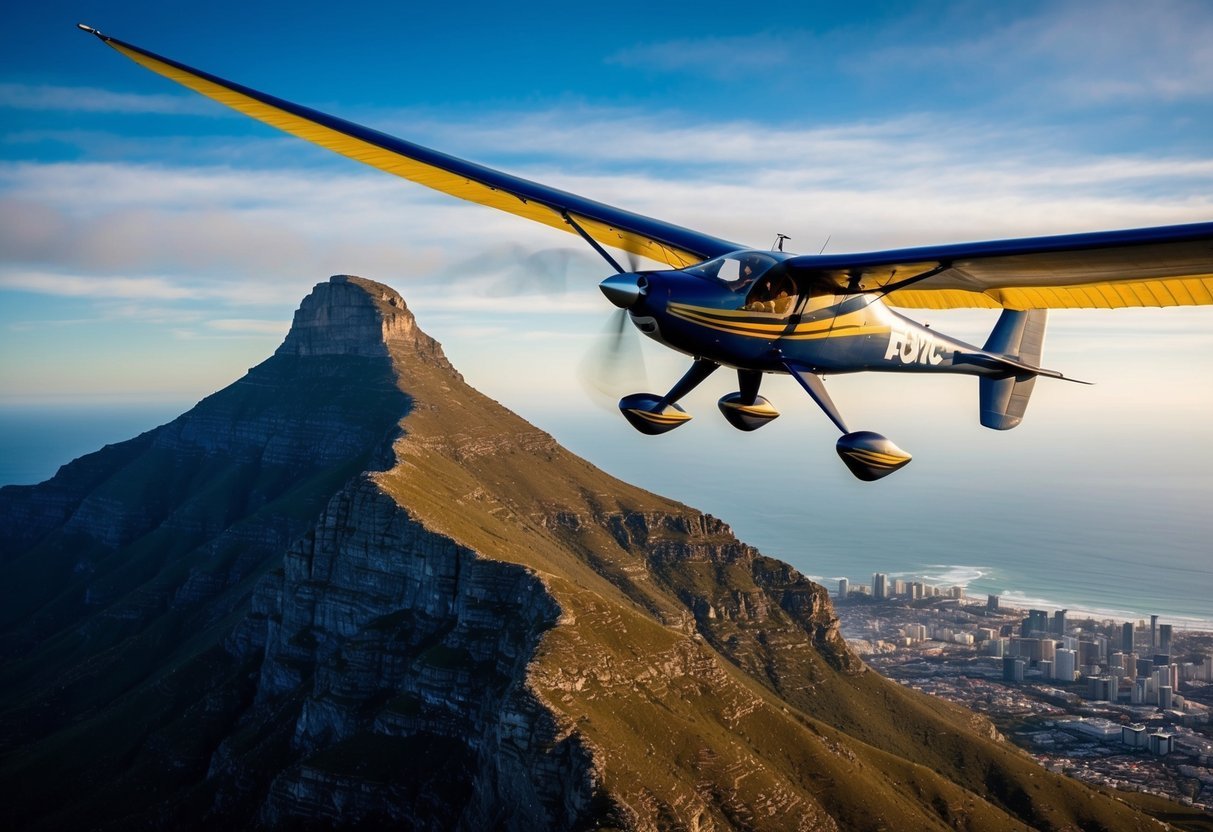
Ready for an epic wingsuit adventure? Look no further than Table Mountain in Cape Town, South Africa.
This iconic flat-topped mountain offers a unique experience for thrill-seekers like you.
Standing at over 1,000 meters tall, Table Mountain provides stunning views of Cape Town and the surrounding coastline.
Its steep cliffs and dramatic drops make it a perfect playground for wingsuit pilots.
You’ll find yourself soaring over breathtaking landscapes as you leap from the mountain’s edge.
The flat summit and vertical cliffs create ideal conditions for an exhilarating flight.
Remember, safety comes first.
Make sure you’re well-prepared and have the necessary skills before attempting this jump.
Always check local regulations and obtain proper permissions.
Table Mountain has a history of attracting daredevils. BASE jumper Jeb Corliss famously took on the mountain in 2019, years after a previous attempt.
His successful jump showcases the mountain’s allure for extreme sports enthusiasts like yourself.
So gear up, take the leap, and experience the rush of wingsuit flying from one of South Africa’s most iconic landmarks.
Table Mountain awaits your next adventure!
3) Chamonix-Mont-Blanc, France
Chamonix-Mont-Blanc is a thrill-seeker’s paradise nestled in the French Alps.
This iconic destination offers some of the most breathtaking wingsuit flying opportunities in Europe.
You’ll find yourself surrounded by stunning alpine scenery, with the majestic Mont Blanc as your backdrop.
The area boasts numerous launch points that cater to various skill levels.
For an unforgettable experience, head to the Aiguille du Midi.
This 3,842-meter peak offers panoramic views of the Mont Blanc massif and surrounding peaks.
It’s a popular starting point for wingsuit flyers seeking an adrenaline rush.
Chamonix is known as the adventure capital of the Alps, making it an ideal base for your wingsuit flying adventures.
When you’re not soaring through the air, you can enjoy other extreme sports like skiing, rock climbing, and paragliding.
Remember to check local regulations and weather conditions before your flight.
Safety should always be your top priority when taking on such high-stakes activities.
With its stunning scenery and thrilling flight opportunities, Chamonix-Mont-Blanc is a must-visit destination for any wingsuit enthusiast.
4) Mount Thor, Canada
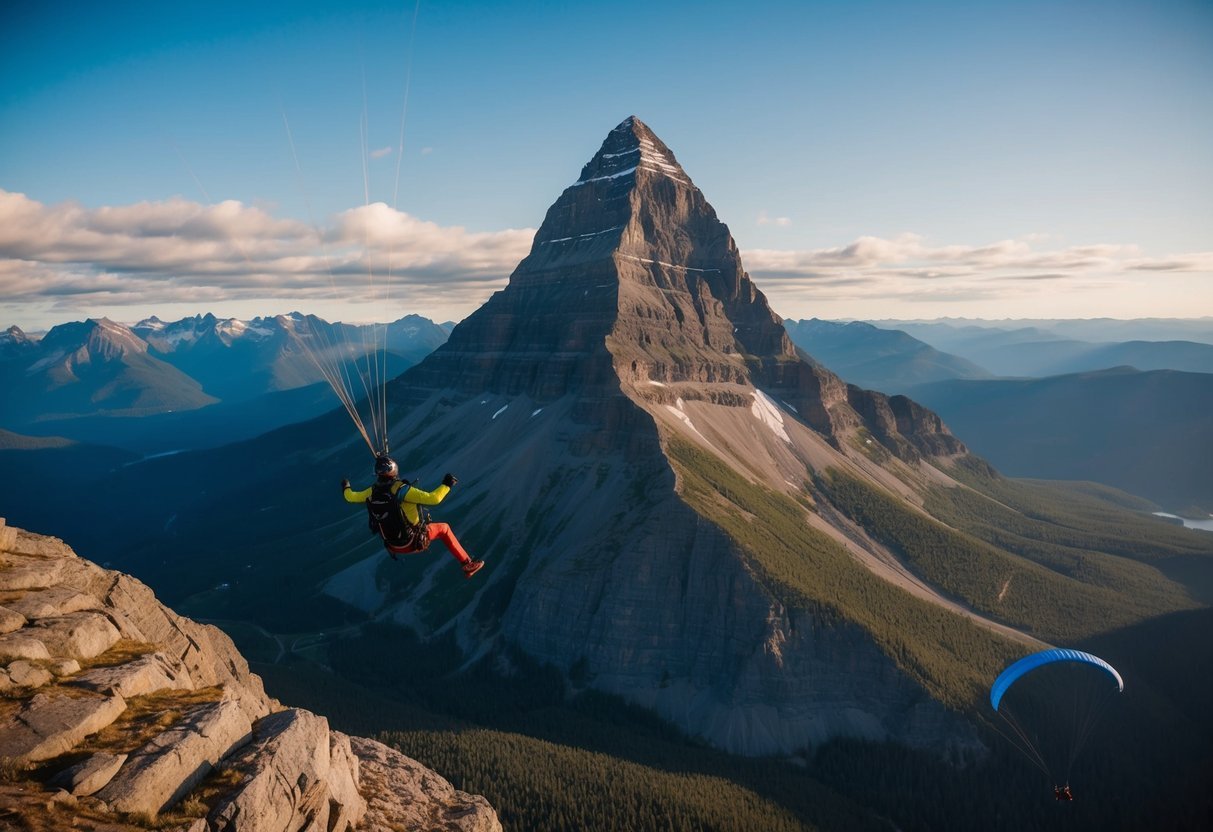
Looking for an extreme wingsuit flying adventure? Mount Thor in Canada’s Baffin Island might be your ultimate destination.
This granite peak boasts the world’s longest vertical drop at 1,250 meters.
You’ll find yourself surrounded by pristine Arctic wilderness as you prepare for your jump.
The sheer cliff face provides an exhilarating flight path that’ll get your adrenaline pumping.
Keep in mind that reaching Mount Thor requires some serious planning.
It’s located in a remote area of Nunavut, so you’ll need to arrange transportation and proper permits.
The weather can be unpredictable, so timing your jump is crucial.
Summer months offer the best conditions, but always check local forecasts before taking the leap.
Remember to bring appropriate cold-weather gear even in summer.
The Arctic climate can be chilly, and you’ll want to stay comfortable while enjoying the breathtaking views.
Mount Thor isn’t for beginners.
You should have plenty of wingsuit experience before attempting this challenging jump.
Safety should always be your top priority in such an extreme environment.
Understanding Wingsuit Flying
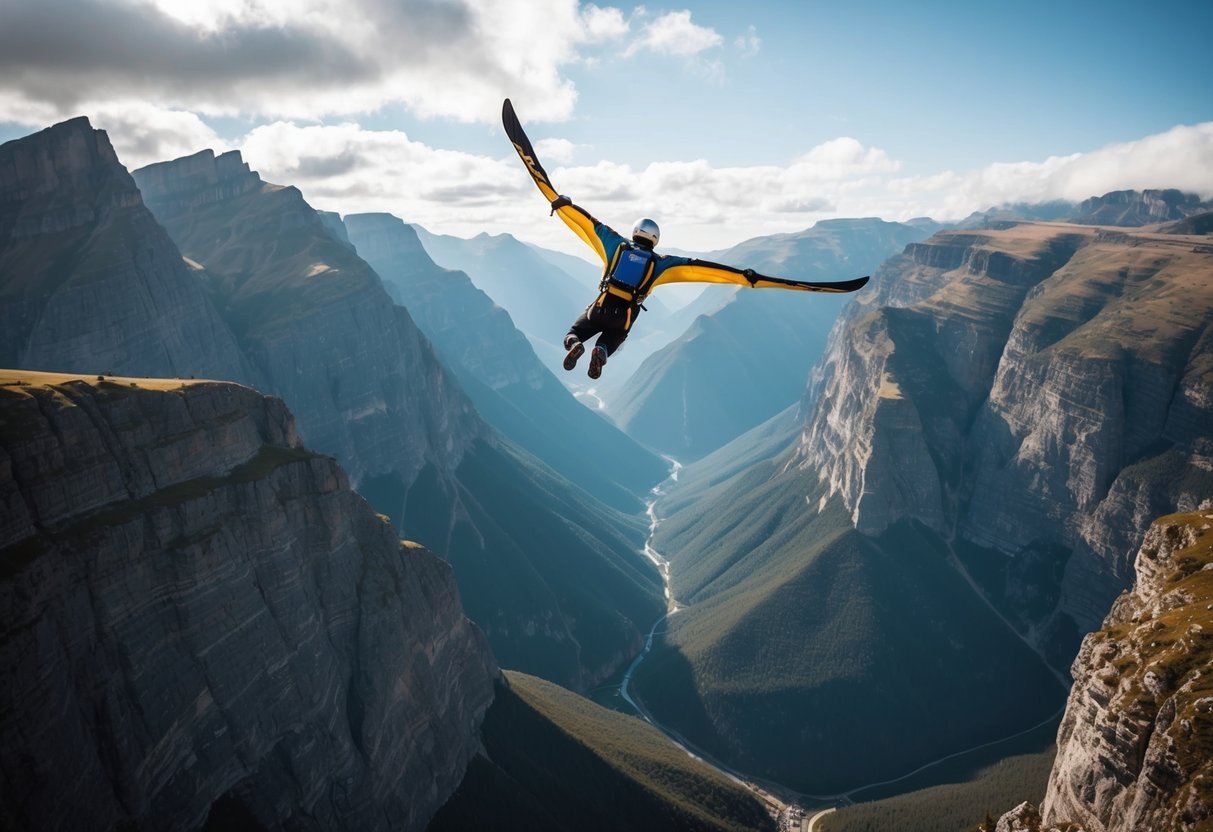
Wingsuit flying is an exhilarating extreme sport that allows you to soar through the air like a flying squirrel.
It combines elements of skydiving and BASE jumping with specially designed suits that create lift and glide.
History of Wingsuit Flying
The dream of human flight dates back centuries, but modern wingsuit flying emerged in the 1990s.
Early pioneers experimented with crude fabric wings attached to skydiving suits.
These initial designs were dangerous and unstable.
In 1999, Patrick de Gayardon made a breakthrough with his “ram-air” wingsuit design.
This used inflatable fabric cells to create a more stable airfoil shape.
Sadly, de Gayardon died testing an experimental suit that same year.
Jari Kuosma and Robert PeÄnik founded BirdMan Inc. in 1999, producing the first commercially available wingsuits.
Their designs made the sport safer and more accessible to skydivers worldwide.
Wingsuit Design and Technology
Modern wingsuits use high-tech materials and aerodynamic principles to maximize glide ratio and control.
The suit consists of fabric membranes between the arms, legs, and torso.
Key features include:
- Arm wings: Large surface area for lift and steering
- Leg wing: Connects the legs for stability and glide
- Inflatable cells: Create a rigid airfoil shape in flight
- Vents: Allow for precise inflation and deflation
Advanced suits can achieve glide ratios of 3:1 or better, meaning you can travel 3 feet forward for every 1 foot of descent.
This allows for extended flight times and impressive aerial maneuvers.
Manufacturers constantly innovate, developing new materials and designs to improve performance and safety.
You’ll find a range of suits available, from beginner-friendly models to high-performance competition designs.
Safety Tips for Wingsuit Flying
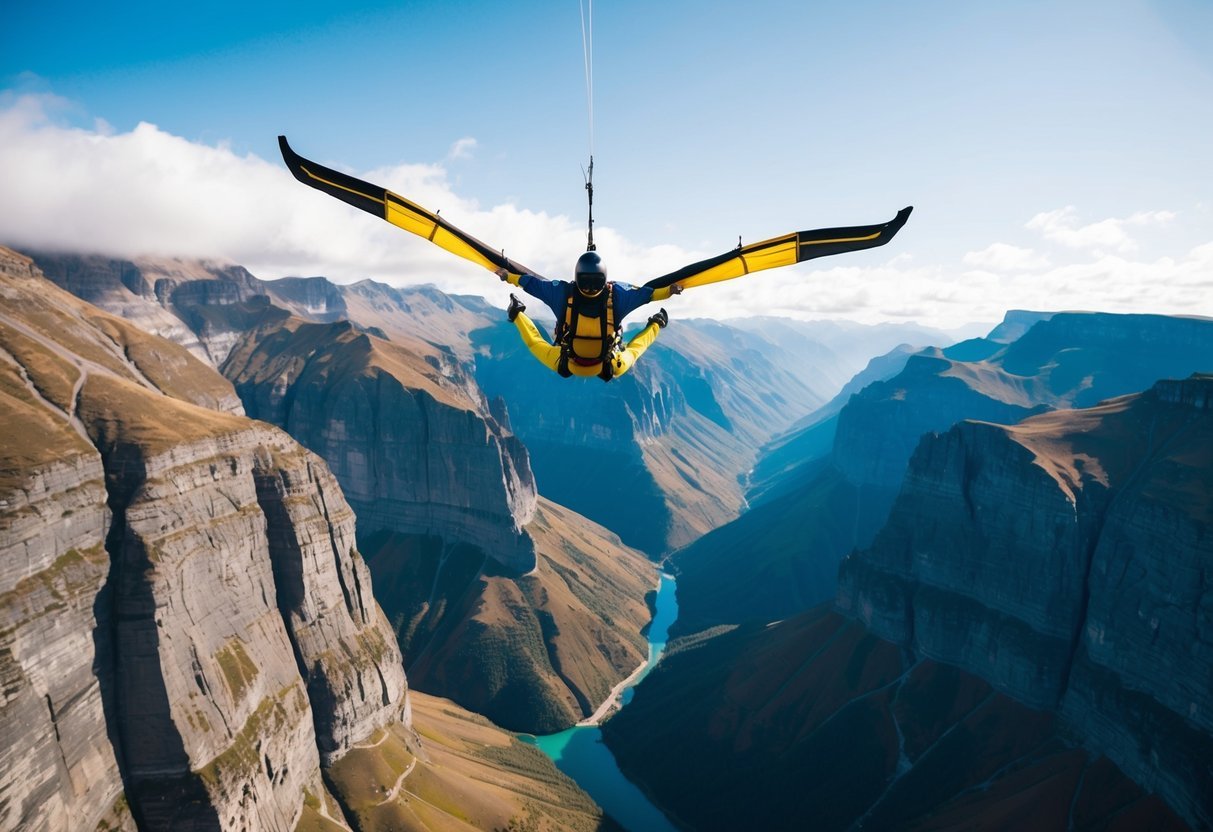
Wingsuit flying is an exhilarating sport, but it comes with serious risks.
Proper gear and weather awareness are crucial for a safe flight.
Essential Gear for Safety
Your wingsuit is just the start.
A well-fitting helmet is non-negotiable – it protects your head from impacts and wind.
Choose one designed for skydiving or BASE jumping.
A reliable altimeter is your lifeline.
It tells you when to deploy your parachute.
Go for a digital one with large, easy-to-read numbers.
Don’t skimp on your parachute system.
A main chute and reserve are must-haves.
Make sure they’re packed by a certified rigger.
Sturdy boots with ankle support help with landings.
They should be comfortable but not too bulky.
Consider wearing impact-resistant padding.
It can save your skin in rough landings.
Weather Considerations
Wind is your biggest concern.
Strong winds can throw off your flight path and make landings tricky.
Check forecasts and on-site conditions before jumping.
Clear visibility is key.
Fog, low clouds, or precipitation are no-gos.
You need to see your landing zone clearly.
Temperature affects air density.
Cold air is denser, giving you more lift.
Hot air means less lift, so adjust your flight plan accordingly.
Thermals can create unexpected turbulence.
Be extra cautious in hot, sunny conditions.
Watch for changing weather.
Conditions can shift quickly in mountainous areas.
Have a backup plan if things look iffy.
Frequently Asked Questions
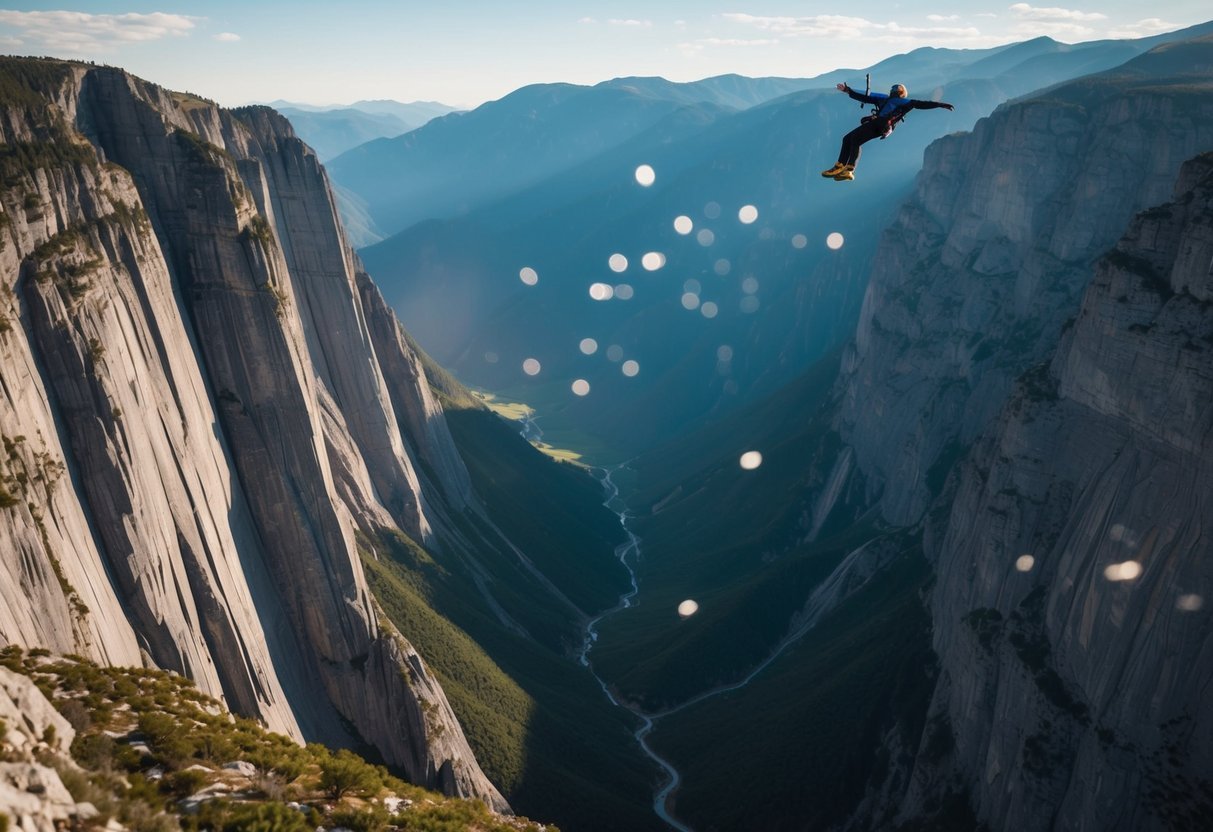
Wingsuit flying is an exhilarating extreme sport that requires careful preparation and knowledge.
Before you take the leap, it’s essential to understand the basics, safety precautions, and best locations for your adventure.
What are some top mountains in the USA for wingsuit flying?
Mount Rainier in Washington is a prime spot for wingsuit flying in the USA.
At 14,410 feet, it offers breathtaking views and challenging conditions.
Other popular locations include Yosemite National Park in California and the Grand Canyon in Arizona.
Where can I find a map highlighting prime wingsuit adventure spots?
You can find maps of wingsuit flying locations on specialized extreme sports websites and forums.
Many online communities dedicated to BASE jumping and wingsuit flying share location information and experiences.
How do I find wingsuit flying locations near me?
To find nearby wingsuit flying spots, connect with local skydiving clubs or BASE jumping communities.
They often have information about suitable locations and can provide guidance on regulations and safety requirements in your area.
What should I know before trying wingsuit flying?
Before attempting wingsuit flying, you need extensive skydiving experience.
Most experts recommend at least 200 skydives before transitioning to a wingsuit.
You’ll also need proper training, equipment, and a thorough understanding of safety protocols.
What’s the beginner’s guide to wingsuit BASE jumping?
Start with skydiving and progress to more advanced jumps.
Once you’re ready for wingsuit BASE jumping, begin with lower altitude jumps and gradually work your way up to more challenging locations like Kjerag in Norway, known for its 3,228-foot cliffs.
How high do you have to be for a safe wingsuit flight?
The minimum safe altitude for wingsuit flying varies depending on your skill level and the specific location.
Generally, experienced wingsuit flyers need at least 500 feet for a safe flight.
However, many prefer higher altitudes of 3,000 feet or more for longer flights and increased safety margins.


